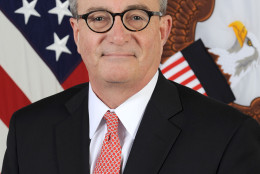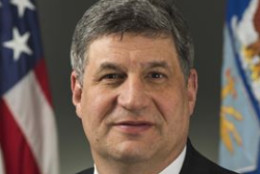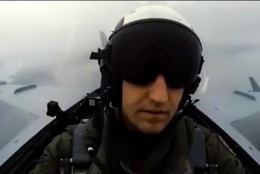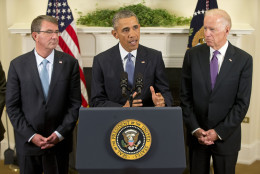Defense
-
Defense Department Comptroller Mike McCord said the department is getting about 96 percent of what it wants for fiscal 2017. He said 96 percent is a good day. But the administration tossed DOD a $2 billion curve ball. Federal News Radio's Scott Maucione has more on Federal Drive with Tom Temin.
December 01, 2015 -
The Defense Department is ramping up its spending in Europe to counter Russian aggression, despite a $17 billion deficit in the fiscal 2017 budget.
November 30, 2015 -
"I'm telling you right now, 10 years from now if the first person through a breach isn't a fricking robot, shame on us." -- Deputy Defense Secretary Bob Work
November 30, 2015 -
Rymer said he will return to work in the financial services industry after having spent more than nine years as an inspector general at three federal agencies.
November 30, 2015 -
The Army is evaluating five years of data to study suicide. The data is both affirming and in some cases disproving what the Army knows about its suicide-prone soldiers. Randy Lane is the division chief of the analytics assessment and systems division at the Army Resilience Directorate. Wendy Lasko is the program manager of the Army Suicide Prevention Program, and Kenneth Cox is the scientific liasion for the Army STARRS program. On Federal Drive with Tom Temin, they tell Federal News Radio reporter Nicole Ogrysko about the data points they collected. The first voice you hear is Lane's.
November 30, 2015 -
Predictive analytics are changing the way the Army thinks about its training and programs to combat suicide — and other adverse factors that might impact a soldier's readiness. The service wrapped up a five-year study, called Army STARRS, this past summer.
November 30, 2015 -
The Defense Department says it’s funded at the minimum level it needs to handle threats around the world. However, defense experts say DoD isn’t spending its money in the right way. DoD report Scott Maucione tells Federal Drive with Tom Temin the department is spending more and getting less. Read Scott's related story.
November 25, 2015 -
Back in March, the Navy said it would test a new IT acquisition process called the innovation cell. Its purpose: to evaluate, buy and insert new commercial technologies onto its networks within the space of one year. It appears to have worked. The Navy made its first awards under the Innovation Cell framework yesterday. Victor Gavin is the Navy's program executive officer for enterprise information systems, and Dan DelGrosso is the PEO-EIS technical director. On Federal Drive with Tom Temin, they talked with Federal News Radio's Jared Serbu about the awards, and what the Navy has learned from the process so far. Gavin speaks first.
November 25, 2015 -
The Defense Department has told Congress that DoD's health IT systems are interoperable with those of Veterans Affairs. Meanwhile, DoD is working to make sure the commercial health record system it just agreed to buy can marry up with the integrated systems DoD and VA have been building for the past several years. Chris Miller, DoD’s program executive officer for health care management, talked about that challenge on Federal Drive with Tom Temin with Federal News Radio’s Jared Serbu as part of the latest edition of On DoD.
November 25, 2015 In March, the Navy announced a new project to speed its adoption of commercial information technology and short-circuit the most cumbersome parts of the government acquisition process. The Innovation Cell, a project of the service’s…
November 25, 2015-
The Air Force's outgoing acquisition chief says there is a lack of incentives for making program schedules faster.
November 25, 2015 -
As possibly the biggest buyer of fuel in the world, the Defense Department can ill-afford to make mistakes in forecasting prices. If it guesses wrong, it could face billions in unforeseen costs. But the Government Accountability Office found mistakes can happen. And this one was a doozy. Johana Ayers, GAO's director of defense capabilities and management issues, fills in Federal Drive with Tom Temin on all the details.
November 25, 2015 -
In anticipation of the upcoming "Star Wars" film, crewmembers from the USS Dwight D. Eisenhower created a parody movie trailer: "Sea Wars: The Ike Awakens."
November 25, 2015 -
The Navy made its first awards under its new Innovation Cell framework for rapid IT acquisition Tuesday, and will insert new technologies for virtual desktops and military base IT infrastructure within the coming months.
November 25, 2015 -
The two-year budget deal agreed to by Congress has left DoD in a hole for its 2017 budget planning.
November 24, 2015












